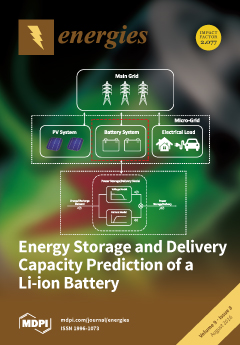1
Department of Electrical and Electronics Engineering, Jubail Industrial College, Jubail 10099, Saudi Arabia
2
Department of Electrical, Electronics and Automation Engineering and Applied Physics, Universidad Politécnica de Madrid, Ronda de Valencia 3, Madrid 28012, Spain
3
Department of Electrical Engineering, Federico Santa María Technical University, Santiago de Chile 8940000, Chile
4
School of Engineering, Faculty of Design and Technology, Robert Gordon University, Aberdeen AB10 7GJ, UK
5
Department of Electrical Engineering, Faculty of Engineering, University of Malaya, Kuala Lumpur 50603, Malaysia
6
UTM Razak School of Engineering and Advanced Technology, Universiti Teknologi Malaysia, Kuala Lumpur 54100, Malaysia
7
Faculty of Law, University of Malaya, Kuala Lumpur 50603, Malaysia
8
University of Malaya Malaysian Centre of Regulatory Studies (UMCoRS), University of Malaya, Jalan Pantai Baru, Kuala Lumpur 59990, Malaysia
Abstract
In order to investigate how artificial neural networks (ANNs) have been applied for partial discharge (PD) pattern recognition, this paper reviews recent progress made on ANN development for PD classification by a literature survey. Contributions from several authors have been presented and discussed.
[...] Read more.
In order to investigate how artificial neural networks (ANNs) have been applied for partial discharge (PD) pattern recognition, this paper reviews recent progress made on ANN development for PD classification by a literature survey. Contributions from several authors have been presented and discussed. High recognition rate has been recorded for several PD faults, but there are still many factors that hinder correct recognition of PD by the ANN, such as high-amplitude noise or wide spectral content typical from industrial environments, trial and error approaches in determining an optimum ANN, multiple PD sources acting simultaneously, lack of comprehensive and up to date databank of PD faults, and the appropriate selection of the characteristics that allow a correct recognition of the type of source which are currently being addressed by researchers. Several suggestions for improvement are proposed by the authors include: (1) determining the optimum weights in training the ANN; (2) using PD data captured over long stressing period in training the ANN; (3) ANN recognizing different PD degradation levels; (4) using the same resolution sizes of the PD patterns when training and testing the ANN with different PD dataset; (5) understanding the characteristics of multiple concurrent PD faults and effectively recognizing them; and (6) developing techniques in order to shorten the training time for the ANN as applied for PD recognition Finally, this paper critically assesses the suitability of ANNs for both online and offline PD detections outlining the advantages to the practitioners in the field. It is possible for the ANNs to determine the stage of degradation of the PD, thereby giving an indication of the seriousness of the fault.
Full article





